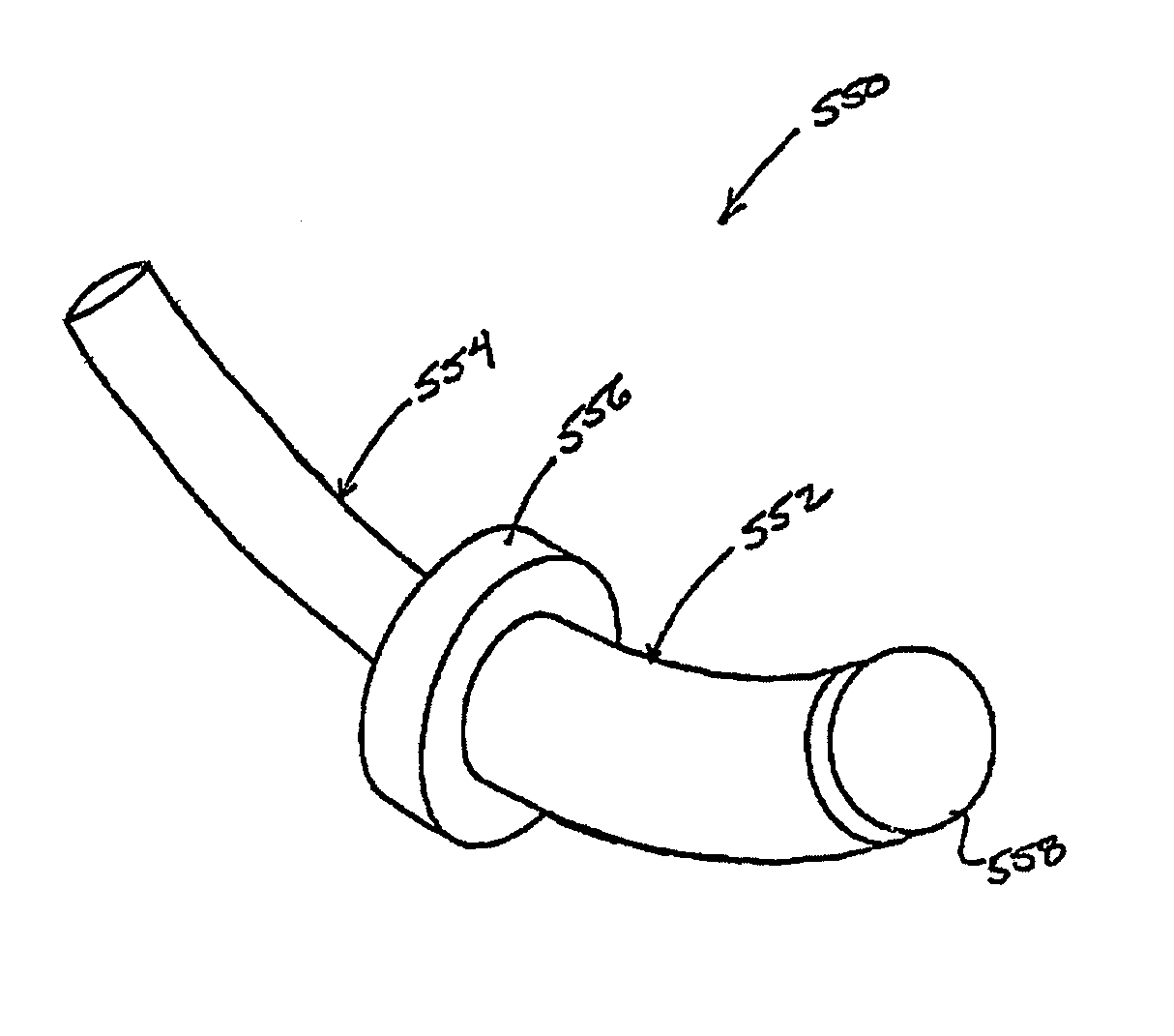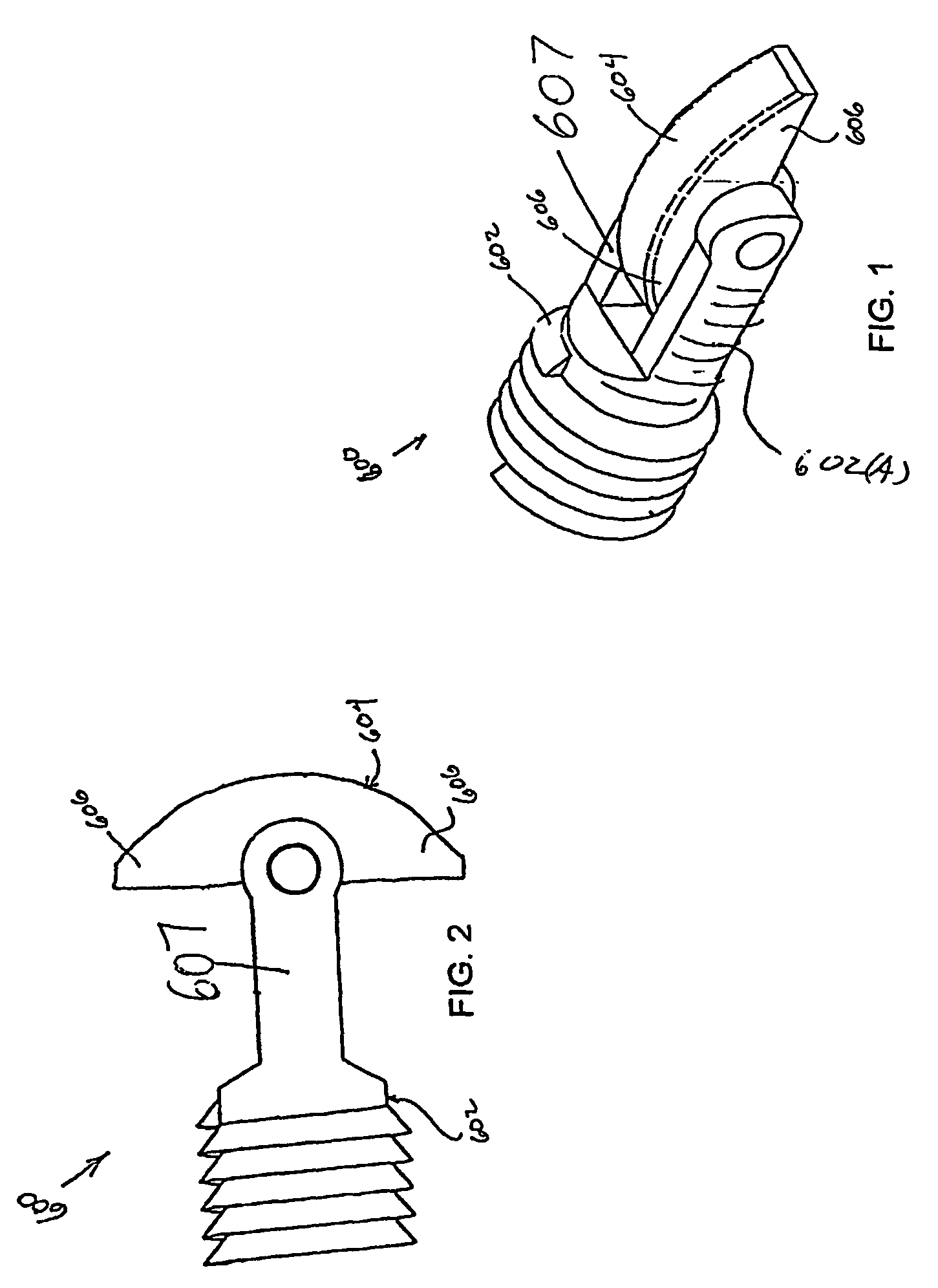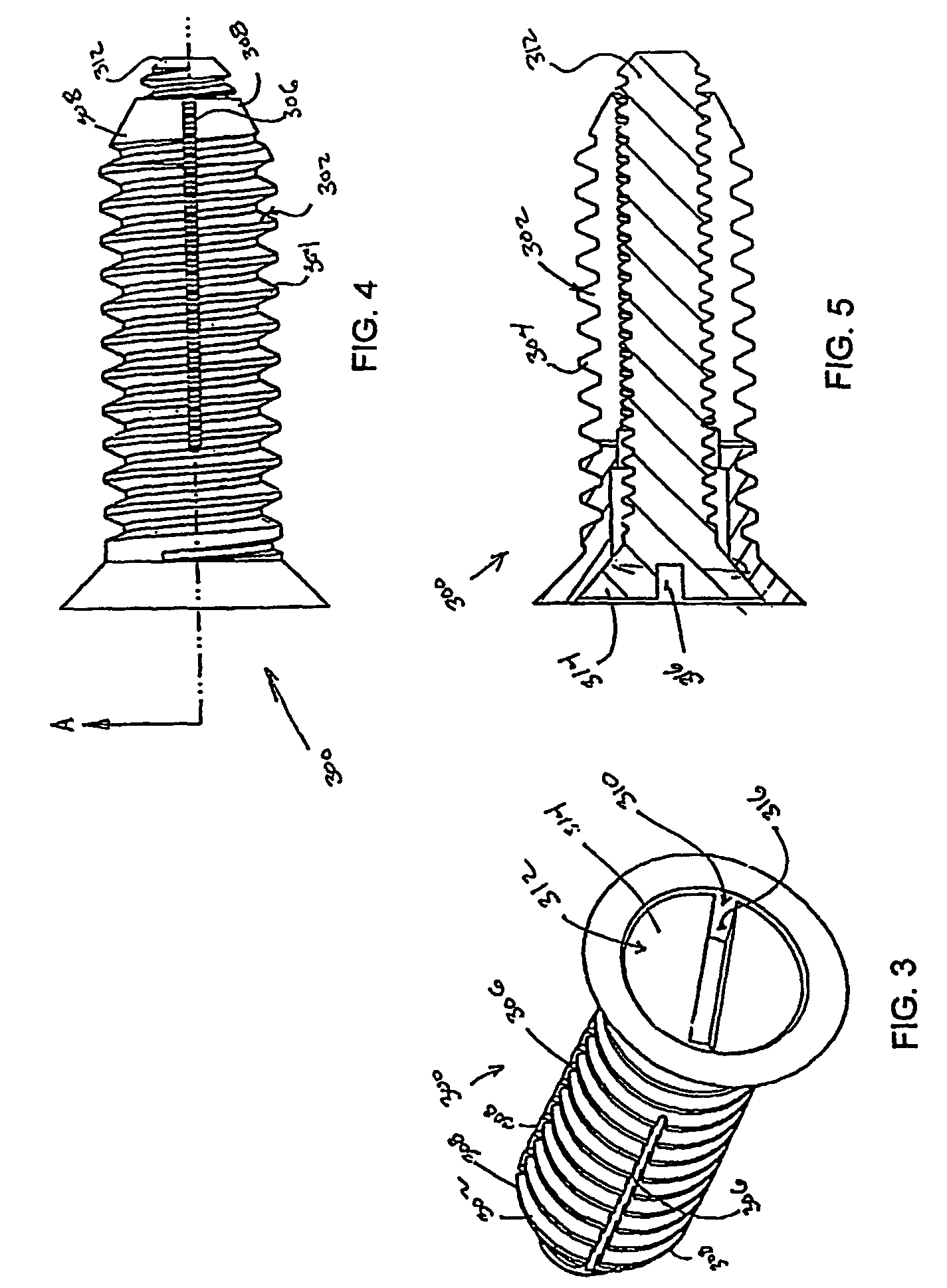Bone fasteners and method for stabilizing vertebral bone facets using the bone fasteners
a bone facets and bone fastener technology, applied in the field of bone fasteners, can solve the problems of screw loosening, inability to secure the plate to the bone or vertebrae, and inability to obtain bi-cortical purchase, etc., and achieve the effects of less invasiveness, less time consuming, and simple structur
- Summary
- Abstract
- Description
- Claims
- Application Information
AI Technical Summary
Benefits of technology
Problems solved by technology
Method used
Image
Examples
Embodiment Construction
[0045]Referring to FIGS. 1 to 24, numerous embodiments of the inventive fastener can be successfully used in a variety of spinal implantation methods and is configured as a stabilization device directed to either secure bone segments or connect inferior and superior articular processes of superior and inferior adjacent vertebrae, respectively. In the latter, the rivet assembly can be used as supplemental posterior stabilization in a circumferential or 360 degree fusion or as a stand-alone device for cases with slight posterior instability.
[0046]A few methods of securing bone fragments or stabilizing the facets can be employed in association with the inventive assemblies. In the context of the facet stabilizing procedure, one of the methods provides for forming a small midline incision configured to expose the facets. Then, the inferior articular process of the superior vertebrae, the facet joint and the superior articular process of the inferior vertebrae are drilled so that a drill...
PUM
 Login to View More
Login to View More Abstract
Description
Claims
Application Information
 Login to View More
Login to View More - R&D
- Intellectual Property
- Life Sciences
- Materials
- Tech Scout
- Unparalleled Data Quality
- Higher Quality Content
- 60% Fewer Hallucinations
Browse by: Latest US Patents, China's latest patents, Technical Efficacy Thesaurus, Application Domain, Technology Topic, Popular Technical Reports.
© 2025 PatSnap. All rights reserved.Legal|Privacy policy|Modern Slavery Act Transparency Statement|Sitemap|About US| Contact US: help@patsnap.com



